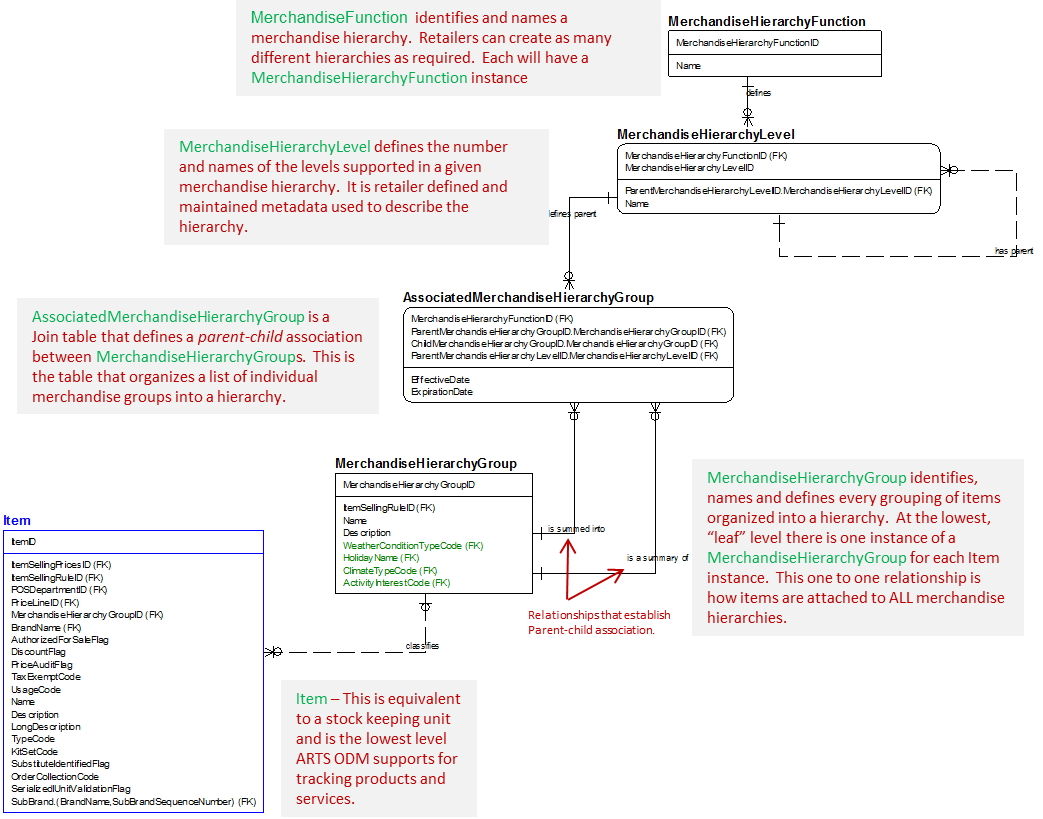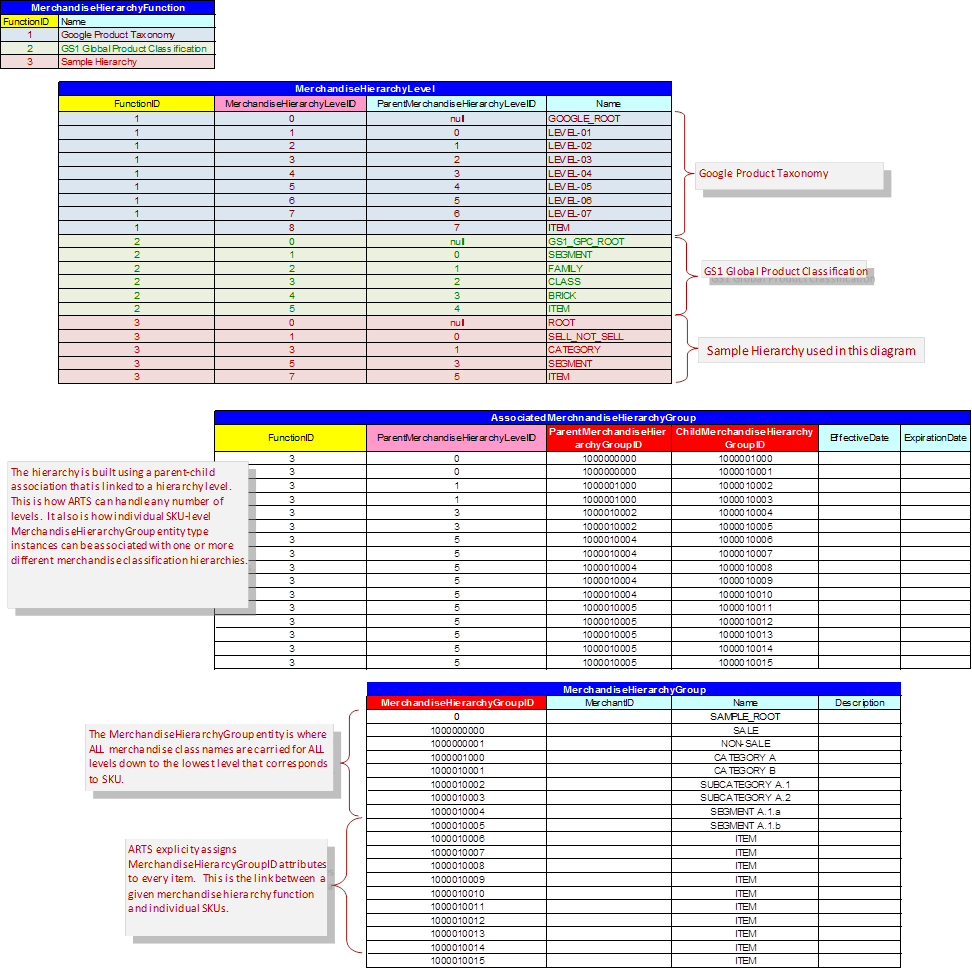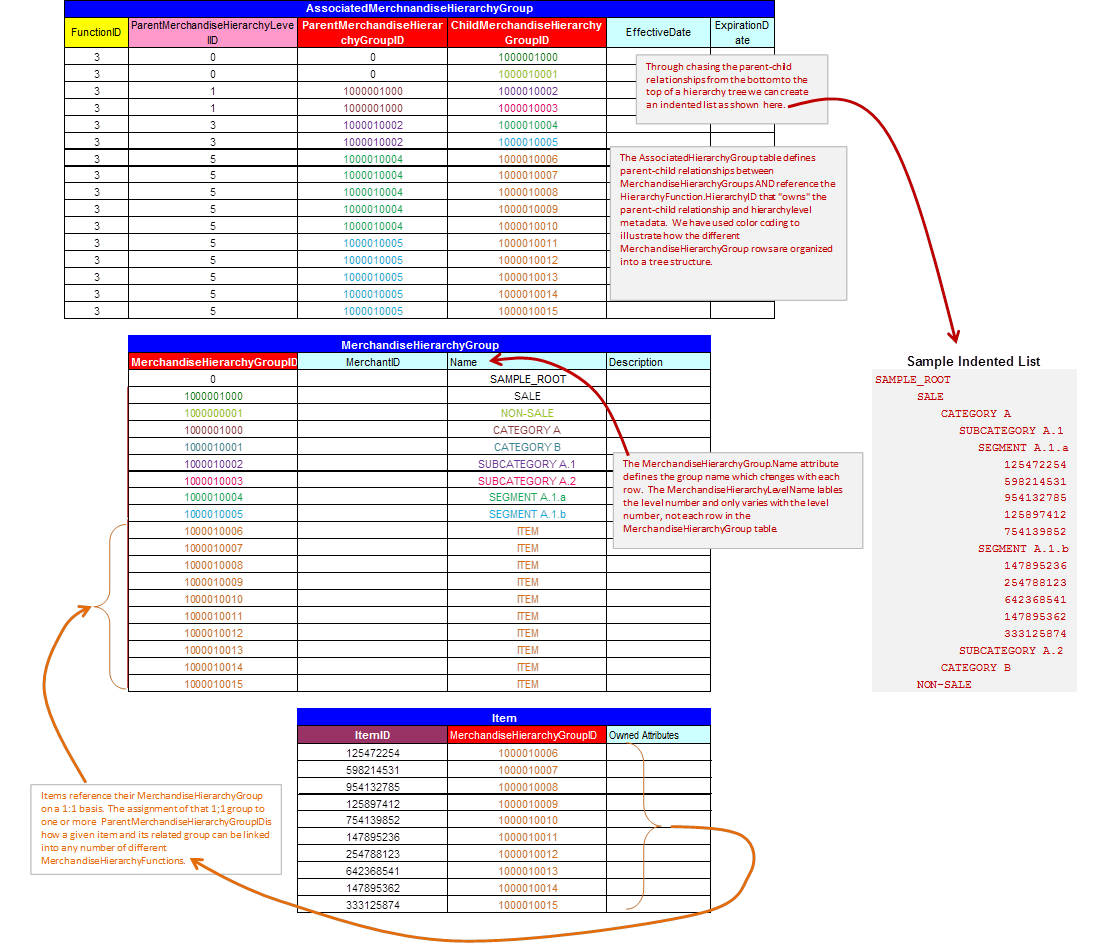Theme Concepts This theme includes subject areas that identify, name, describe and classify retailer items. Items may be tangible products or intangible services. The items and services represented in these subject areas may be offered for sale and/or may be consumed by the retailer as supplies. ARTS provides a rich collection of product and service entities that can represent a wide range of offerings including: •Soft goods and apparel •Hard goods •Durable goods (big ticket items, serially identified items) •Digital goods •Perishable goods (fresh and perishable items) •Kit items (named, identifiable sets of other items sold together or as separate items) •Bulk items (items sold by unit weight, volume or liquid volume) •Retail services •Rental services This variety of item types is handled through extensive Item sub-typing and extension through attributive entity types (see Logical 01010 - Item Description - Sub-type View). Alternate Item Identification StrategiesItems may be identifies at different levels of granularity using different unique identity attributes depending on how they are used. Within the ARTS data model the lowest common denominator for identifying items is the Item entity. The Item entity is the irreducible retail stock keeping unit for every product and service that a retailer sells. Item entity type instances must be uniquely identified and defined. There is a second way to identify items at the point of sale which is represented by the POSIdentity entity. The POSIdentity entity identifies a scan code or bar code used to identify an item at the point of sale. The POSIdentity is cross referenced to the root Item through an associative entity called BusinessUnitGroupItem. BusinessUnitGroupItem is the intersection set between the universe of unique items sold by a retailer and the set of items sold through a specific business unit group owned by the retailer. POSIdentity is unique only within a BusinessUnitGroup context. Also, because BusinessUnitGroupItem is an associative entity type, a given base Item (or SKU) can have more than one POSIdentity entity instance associated with it. This comes in handy where a given item is sold by two BusinessUnitGroup "divisions" of a retailer operating in two different countries. The same base item is scanned using a UPC code in the US-based BusinessUnitGroup and an EAN code in the South American-based BusinessUnitGroup. The ARTS data model handling of scan codes provides retailers with the proper mix of absolute uniqueness of item identities for internal management and control with a flexible approach to implementing different scan codes at the point of sale level. Vendor/suppliers identify items a third way which is by their catalog or part number. The catalog or part number is the supplier's unique identity for an item. In ARTS retailer Item indentifiers are cross referenced to supplier identifiers through an associative entity called ItemSupplierItem. This feature allows a retailer to support multiple suppliers (each with their own part number) for one of its items (SKUs). The Logical 01500 - Item Supplier View subject area provides a deeper description of item from a vendor/supplier point of view. Merchandise Hierarchy Modeling for Item Category Management & TaxonomyEvery retailer has at least one product taxonomy it uses to hierarchically classify all of the merchandise and services it sells. Many retailer use multiple category hierarchies. For example on user of the ARTS data model maintains one merchandise classification scheme for its buyers and commodity specialists and a different scheme for its merchandising team. Both are built around a common Item identity and descriptive item entities. The ARTS Item Category Management and Taxonomy Model diagram explains how merchandise hierarchies are represented. Figure 75 - ARTS Item Category Management and Taxonomy Model
The approach illustrated in this diagram allows retailers to define as many separate merchandise hierarchies as necessary. Also, each hierarchy can have as many levels as necessary. For most retailers seven levels is sufficient. The next two diagrams illustrate how the merchandise hierarchies work using sample tables and data. Figure 76 - ARTS Sample Merchandise Hierarchy Tables With Values Part 1 of 2
Figure 77 - ARTS Sample Merchandise Hierarchy Tables With Values Part 2 of 2
The strategy illustrated in these three diagrams is applied to a number of other ARTS hierarchies. Item Collections and KitsRetailers may sell individual items as kits or ensembles which are assigned their own unique item identifiers. The ARTS data model represents these as aggregate items. Item Tracking - Interface with Fresh Item Management TopicPerishable items, pharmacy items and other kinds of merchandise that require tracking through the retail operations are addressed through fresh item management entities. The topic Fresh Item Management and its related subject area discusses the traceability extensions to item in detail. |


